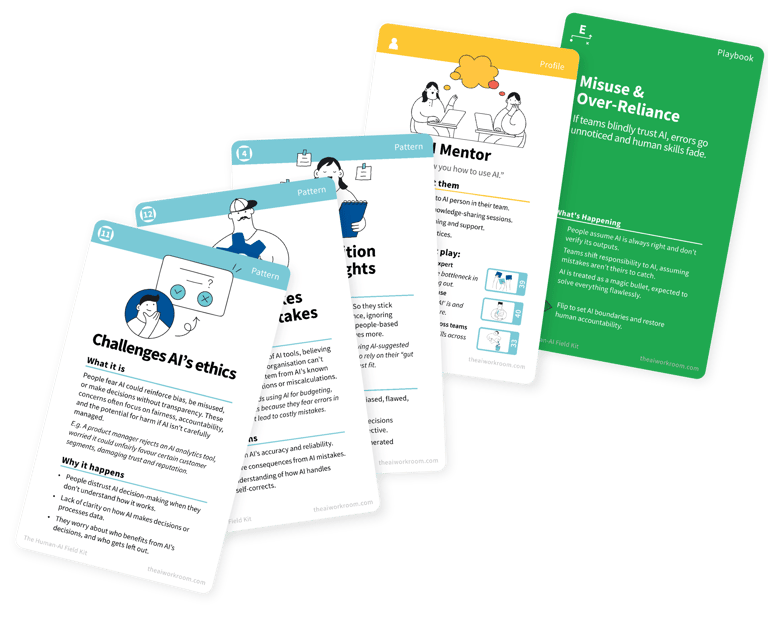The AI Pragmatist
BEHAVIOUR PROFILEBEHAVIOUR KIT
Lauren Kelly
They’re thoughtful and steady, not swayed by hype. They see both promise and risk. They’ll use AI, but only when it fits and makes sense. While others rush or resist, they stay grounded. Their caution brings balance, but too much of it can leave them trailing behind.
How to spot them
Signature behaviours:
Reflects before adopting – Doesn’t use tools just because they’re trending.
Journals or discusses AI – Thinks in public, writes posts, or leads debates.
Adapts with intention – Changes AI use based on reflection, not habit.
Runs small experiments – Tests AI in low-risk ways before scaling.
Checks for fairness and impact – Scrutinises bias, ethics, and sustainability.
What this means for you:
They raise the quality of AI thinking in any team.
They help avoid unethical use, blind spots, and bias blow-ups.
But if not supported, they can delay adoption or miss first-mover advantages.
With the right guardrails, they become your ethical compass and trusted evaluator.
The challenges they create
⚠️ Analysis paralysis – Too much thinking, not enough trying.
⚠️ Skeptical slowdown – Slows decisions if transparency is lacking.
⚠️ Opportunity cost – May miss out while others move ahead.
⚠️ Reluctance to scale – Uses AI but resists expanding its role too quickly.
What to do
Show the ‘why’, not just the ‘what’
Reveal how AI reached its suggestions, not just the final output.
Use models or decision trees that explain logic in plain language.
Give them the tools to question, explore, and understand AI behaviour.
Replace doubt with guided experiments
Suggest a simple, low-stakes use case: “Try AI here, then reflect.”
Encourage short feedback loops. Use, pause, review, adjust.
Offer frameworks to evaluate outcomes together, not alone.
Let them guide fairness and quality
Give them ownership of bias checks, environmental reviews, or risk flags.
Use peer reviews to evaluate where AI adds value and where it doesn’t.
Position them as quality stewards, helping others think before they deploy.
Methods that use the profiles
More profiles to explore
Get all 42 patterns and more in the HAP Behaviour Kit and HAP system to run
A digital card kit that spots human friction, flips the behaviour, and turns AI skeptics into everyday users.
Works remote, hybrid, or in‑room.
£765
(+ applicable taxes)


Human-AI Performance
By Lauren Kelly
Contact: lauren@alterkind.com
© 2025 Alterkind Ltd. All rights reserved.
Human-AI Performance™ is a proprietary methodology developed by Alterkind Ltd using our Behaviour Thinking® framework. All content, tools, systems, and resources presented on this site are the exclusive intellectual property of Alterkind Ltd.
You’re welcome to use, share, and adapt these materials for personal learning and non-commercial team use.
For any commercial use, redistribution, or integration into client work, services, or paid products, please contact lauren@alterkind.com to discuss licensing terms.
Icons by Creative Mahira, The Noun Project.
Thanks to Nicholas Edell, Valentina Tan and multiple VPs implementing AI for your feedback during development.
LICENSE
Based on work at alterkind.com
For commercial licensing contact: lauren@alterkind.com
